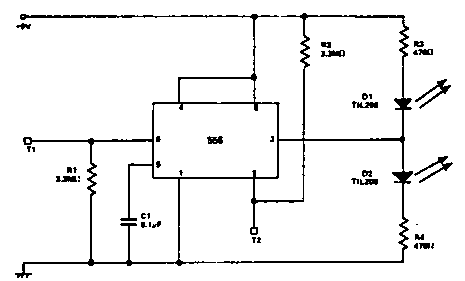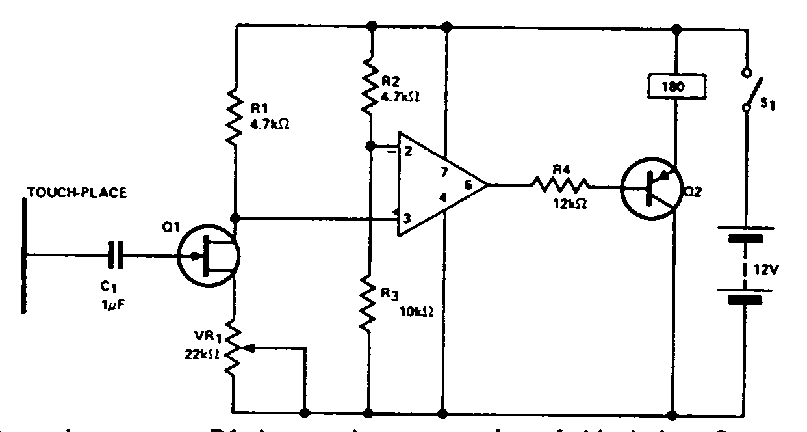The circuit
illustrated can be set to energise the relay when the plate is lightly
touched. Under certain circumstances the proximity only of the body is
sufficient to operate the switch.
A high impedance input is provided
by Q1, a general purpose field effect transistor such as 2N3819. A general
purpose 741 op-amp is used as a sensitive voltage level switch and this
in turn operates the current buffer 02, a medium current pnp bipolar transistor,
thereby energising the relay which can be used to control equipment, alarms
etc.
In the quiescent state, the voltage at pin 3 of
the op-amp is set higher than the voltage at pin 2 by adjustment of VR1.
This ensures that the voltage at pin 6 is high and Q2 and the relay are
off. |
Upon
lightly touching the touch-plate, a decreasing reverse bias VGS increases
the drain current flowing through Q1 and the resultant voltage drop across
Hi lowers the voltage at pin 3 below that at pin 2.
The voltage at pin 6 falls and switches on the relay
via Q2. Resistor R4 may need to be selected to ensure that the relay is
held off since a small positive voltage at the output remains even though
the voltage at pin 3 is lower than that at pin 2 in the quiescent state.
|
This
problem can be overcome by using dual power supply for the op-amp in the
more usual mode of operation of this device. Component values are not critical
and there is considerable scope for experimentation.
The sensitivity of the
circuit to the proximity of the body depends upon the nature and strength
of the surrounding electromagnetic fields produced by mains wiring and equipment
in the vicinity, for it is the pick-up of this energy which the body couples
to the circuit. |

